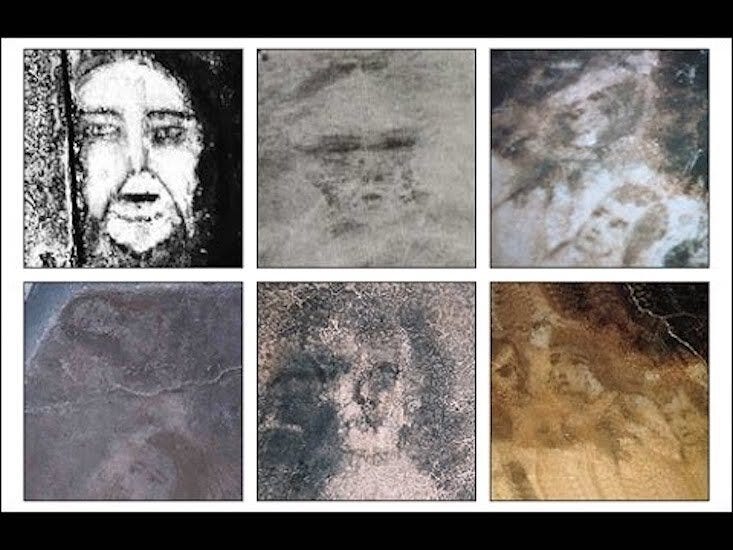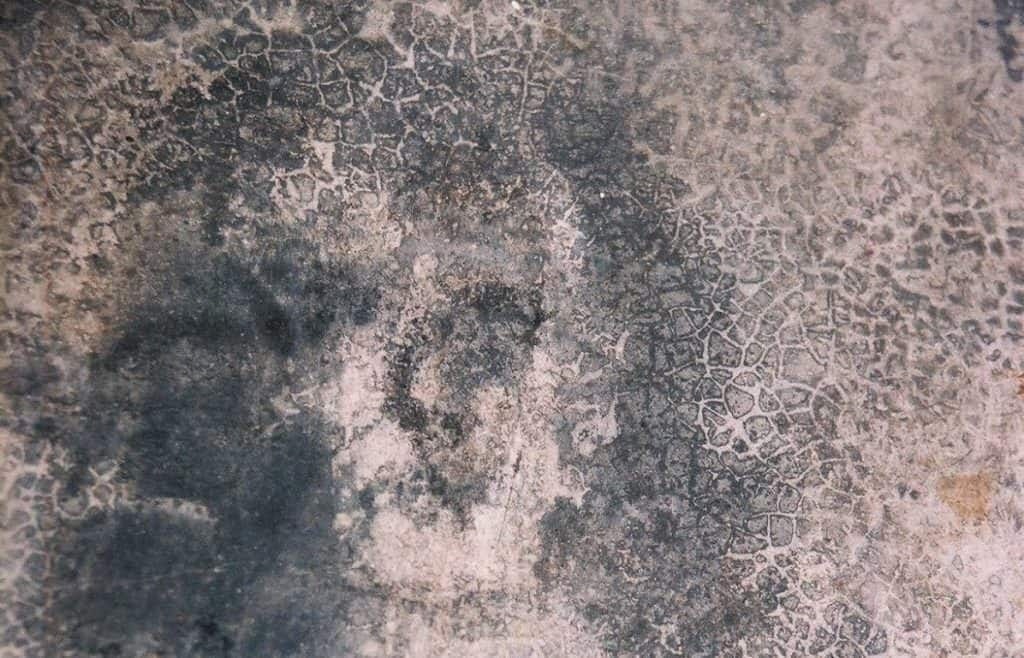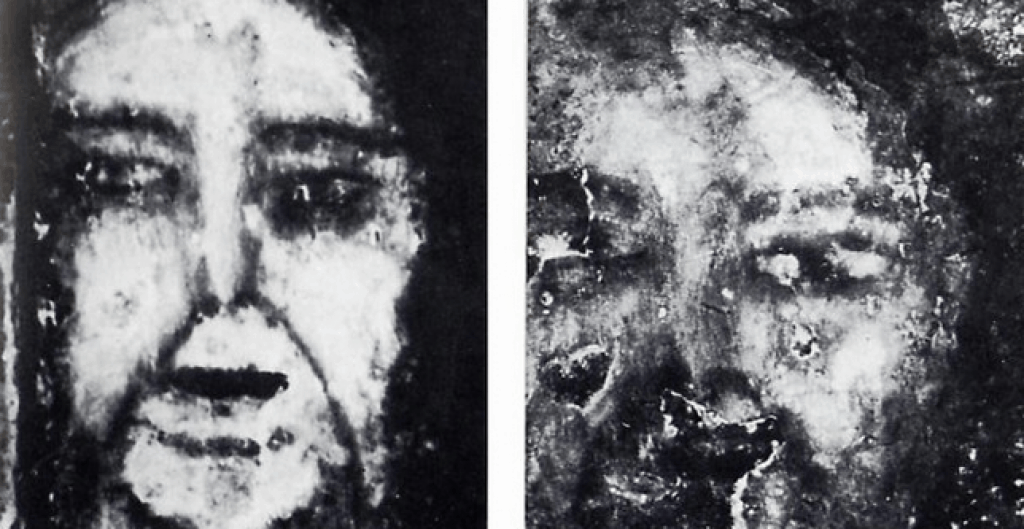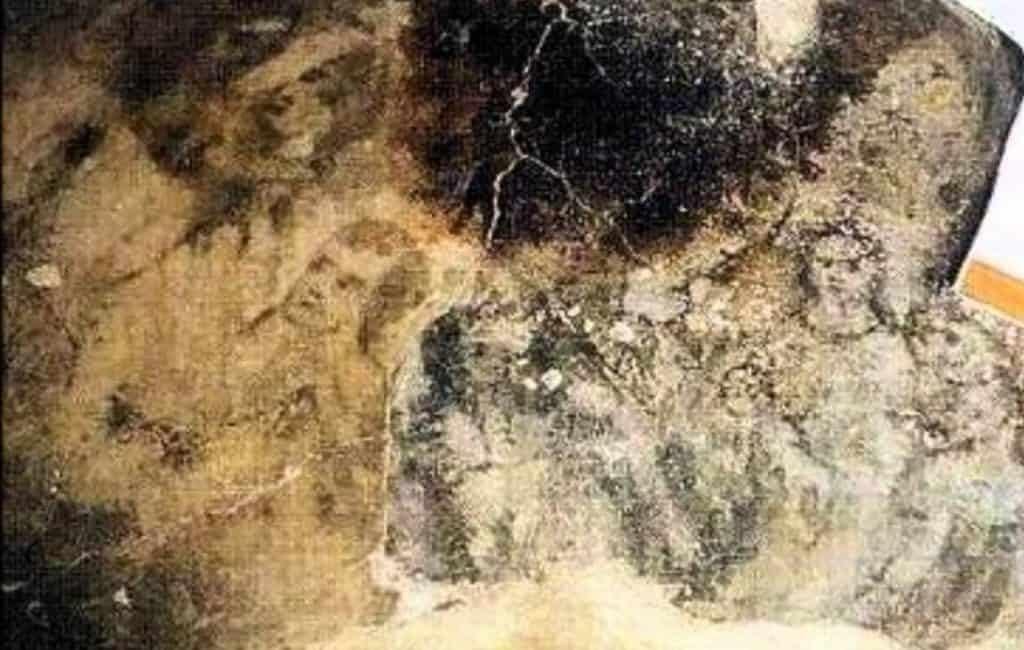Belmez Faces: Mystery of the People in the Floor
In the sleepy Andalusian town of Belmez, Spain, an ordinary stain on Maria Gomez Cámara’s kitchen floor in August 1971 mysteriously morphed into a haunting human face, igniting what would become one of the 20th century’s most enigmatic and well-documented paranormal phenomena—the Belmez Faces. Despite desperate attempts to scrub, destroy, and excavate the site, which unearthed ancient skeletons beneath, the faces persisted, multiplying and evolving in ways that baffled scientists, skeptics, and believers alike, even continuing long after Cámara’s death.
Belmez Faces Appeared and Skeletons Were Found
When Belmez resident María Gómez Cámara noticed a stain forming on her kitchen floor on August 23, 1971, she could not have anticipated the decades-long controversy that would follow. The 85-year-old woman and her family claimed that the stain began to develop over a period of time and eventually formed what appeared to be a human face.
Without any apparent cause, the stain began to develop over a period of time and eventually molded itself into a face. While this face was forming, the stain was said to have moved position. Terrified by this, Cámara tried to remove it several times by scrubbing vigorously. All of her efforts proved futile, so she solicited the assistance of her husband, Juan Pereira, and son Miguel. Juan’s solution was a much more final one than mere cleaning. Along with their son, he took a pick-ax to the whole floor and cemented a new one in its stead. For about a week, things looked as though they had returned to normal. Then, according to the family, the face reappeared.
Skeletons Under the Kitchen
The Pereira-Cámara family still wanted this image removed on a permanent basis. But local gossip had somehow begun and quickly spread among the populace of the small Spanish town. When the Mayor heard about the Belmez Face, as it had been dubbed, he took steps to ensure that the image was not destroyed. They carefully removed it instead for serious study. The family asked the local council for any help that they could avail.
When surveyors came to the property, the decision to excavate the kitchen was taken. At the time it was considered the best and only method to try and understand why the face was present. It didn’t take workmen very long to find a potential clue to the appearance of the Belmez faces. Buried almost ten feet beneath the kitchen floor were some skeletons. Some of these had no skulls.
The exact age and origin of these remains is disputed. While some sources claim the house was built over a 13th-century Muslim cemetery, and local legends speak of murders in the 17th century, no scientific dating was ever performed on either the skeletal remains or the faces themselves. The hole was eventually filled in and a new floor was cast in concrete.
Comings and Goings of Belmez Faces
Things were different this time around though. Instead of a single face making an appearance and refusing to budge no matter what, multiple faces began to appear on the floor. One visage would display prominently on the cement floor, only to be replaced by another. Sometimes this regeneration would happen over the course of mere hours. Some of the Belmez faces put on display were those of women and children. If the council had done anything for the Pereira-Cámara’s, it actually made things worse for them.
Word of this occurrence didn’t start and stop in the town this time. The reports went national and even international, going as far as Germany and their renowned paranormal investigator Dr. Hans Bender. It was Bender that cited this activity as the most important case of the century.
From the very beginning, the Cámara-Pereira family claimed they wanted only to rid themselves of the apparitions. However, they soon began charging admission for visitors to view the faces. Visitors flocked to the house: students, researchers, priests, police officers, journalists, and skeptics all wanted to see this unexplained phenomenon. By some accounts, up to 5,000 people per day lined up to see the faces during peak interest.
Researchers Investigate and Seal Off the Kitchen
A full-scale investigation was launched. Samples of the concrete used were sent to the Instituto de Ceramica y Vidrio (ICV) for study. The ICV could find no evidence of any pigment, dyes or paint used, which ruled out a hoax. The remainder of the floor was photographed in sections and covered with a jacket that was sealed at the edges. Finally, the door and windows were all sealed with wax.
Dr. Hans Bender attempted controlled experiments, including sealing portions of the floor with transparent plastic sheets to detect fraud. However, these experiments encountered technical difficulties with condensation and hygiene issues. Bender later expressed disappointment, noting that “technical obstacles prevented reaching the intended highest level of documentary evidence.” He never published a formal scientific paper on the case.
Skeptics and Theories
The unexplained mysteries happening at the Pereira home got the attention of investigators. Experiments designed to prove or disprove a hoax took place. Some tests were inconclusive, while others indicated that there were no paint substances on the concrete floor.
However, other investigators reported they had detected paint, chemical residues, and brush marks. Some analyses detected soot, vinegar, acids, silver compounds which could have been used to create the images.
Other suggestions for possible causes of all this were being considered. One of the prime candidates was a process known as Thoughtography. This is a psychokinetic ability that allows a person to project an image onto a surface either deliberately or accidentally. For this to be the case, then the prime suspect would be Maria Cámara.
Studies of the faces by academics did make notes that many of the expressions were identical to those of Maria at the time the faces would appear. Another clue used against her was the fact that the faces tended to appear while Maria was present. When she was away from the house, the activity would abate. A counter-argument to this proposal happened on the morning of 3 February 2004. Maria Cámara sadly passed away. But, the faces continued to appear on the bare stone floor of her kitchen.
After María’s death, psychic researcher Pedro Amorós attempted to “discover” new faces in the house, claiming a new wave of Belmez faces was occurring. However, these claims were quickly debunked in the Spanish media, and investigators dismissed the post-death appearances as obvious fakes created to keep the legend alive.
The Evidence for Hoax
The preponderance of evidence points to deliberate fraud:
Financial Motive:
The family charged admission to see the faces
The house became a tourist attraction generating income
The phenomenon continued for over 30 years, coinciding with ongoing financial benefit
Physical Evidence:
Multiple investigators detected paint, chemical residues, and brush marks
Analysis found substances consistent with deliberate creation (soot, vinegar, acids, silver compounds)
The faces could be created using known artistic techniques
Official Determinations:
The city government concluded it was a hoax
Authorities banned further tourist business at the residence
No controlled scientific experiment successfully demonstrated paranormal origin
Behavioral Evidence:
The family controlled access and charged fees
Faces appeared primarily when family members were present
Post-death “faces” were easily identified as fakes
Cultural Context
The persistence of belief in the Belmez faces, despite the evidence of fraud, reflects the cultural context of Andalusia. The region places deep emphasis on Catholic miracles and the Virgin Mary, while also bearing the influence of Romani (gypsy) traditions that include belief in psychic powers, faith healing, and communication with the dead. For many believers, the Belmez faces represented a confirmation of spiritual powers and divine presence.
Legacy and Current Status
The Belmez faces case remains controversial more than 50 years after it began. The house at Calle Real 5 in Belmez de la Moraleda is occasionally mentioned in paranormal literature and tourism materials, though it no longer attracts the crowds it once did.
Conclusion
While believers continue to argue for paranormal explanations, the weight of evidence strongly indicates the Belmez faces were an elaborate hoax perpetrated by María Gómez Cámara and her family for financial gain. Multiple investigators found physical evidence of paint and chemicals, authorities officially declared it fraudulent, brush marks were detected, and the family profited financially from tourist admissions.
The case is perhaps better understood not as a genuine paranormal phenomenon, but as:
A fascinating example of how paranormal beliefs persist despite contradictory evidence
A demonstration of the power of cultural context in shaping perception
A cautionary tale about the importance of critical thinking and scientific skepticism
An illustration of how financial incentives can drive the perpetuation of hoaxes.
Whether one views María Gómez Cámara as a deliberate fraud or a sincere believer who nonetheless painted the faces, the Belmez case stands as one of the 20th century’s most persistent and well-documented alleged paranormal phenomena—and most likely, one of its most successful hoaxes.
By Les Hewitt
References
Mysterious Planet
The Cobra Nose
The Horror Tree Blogspot






